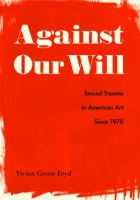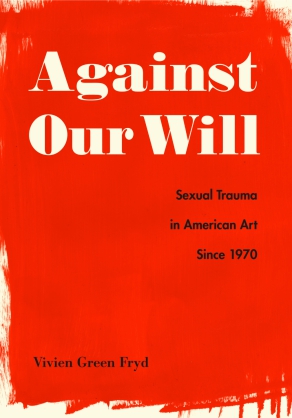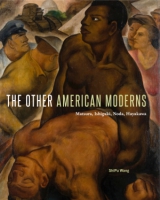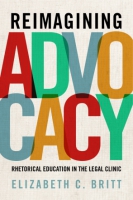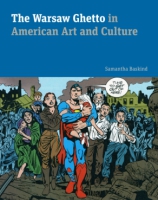Against Our Will
Sexual Trauma in American Art Since 1970
Vivien Green Fryd
Winner of the 34th Annual Eldredge Prize from the Smithsonian American Art Museum“In art communities that rarely discuss sexual trauma, even as it occurs within the communities, and in a cultural climate in which the #MeToo movement remains necessary, Fryd’s book provides survivors of sexual trauma and their allies with deserved acknowledgement and sometimes cathartic release.”
- Media
- Description
- Reviews
- Bio
- Table of Contents
- Subjects
Fryd shows how American artists such as Suzanne Lacy, Leslie Labowitz, Faith Ringgold, Judy Chicago, and Kara Walker insisted on ending the silence surrounding sexual violence and helped construct an anti-rape, anti-incest counternarrative that remains vibrant today. She looks at how second-wave feminist artists established and reiterated the importance of addressing sexual violence against women and how their successors in the third wave then framed their works within that visual and rhetorical tradition. Throughout, Fryd highlights specific themes—rape and incest against white and black female bodies, rape against white and black male bodies, rape and pornography—that intersect with other challenges to and critiques of the sociocultural and political patriarchy from the 1970s through the present day.
Featuring dozens of illustrative works and written by an art historian who is a scholar of PTSD and herself a survivor, this groundbreaking and timely project explores sexual violence as a discrete subject of American art with open eyes and unflinching analysis. Against Our Will challenges the reader to serve as witness to the trauma in much the same way as the works Fryd studies.
“In art communities that rarely discuss sexual trauma, even as it occurs within the communities, and in a cultural climate in which the #MeToo movement remains necessary, Fryd’s book provides survivors of sexual trauma and their allies with deserved acknowledgement and sometimes cathartic release.”
“Highly recommended for academic libraries serving art history, women’s and gender studies, pan-African studies, or other units with an interest in intersectional feminism, racial justice, social justice, or art.”
“Pairing trauma theory with detailed analysis of American art focused on sexual violence, Fryd’s study is a timely and compelling contribution to ongoing conversations about the intersections of images and actions, art as social and political catalyst, and the impact of feminist thought in contemporary American culture.”
“Reading [this book] now is simultaneously illuminating and painful, an acute reminder of how far we’ve come in the decades since, yet also of how mired in the same problems we remain. What stands out is the fearlessness of the early female performance artists and the extent to which their work shaped how we think about art today.”
“Eminently worthy of serious reading by art historians, sexual trauma therapists, and anyone interested in the history of women’s struggle to combat rape culture. The depth of research and validity of arguments regarding works developed in the 1970s and by black artists are formidable, as is the thesis that repetition is a strategy of artists working with the subject of rape. For the first author to explore the uncharted territory of art on rape, where all research is new, Fryd’s accomplishment is laudable.”
“Fryd urges us to take seriously the impact of all forms of sexual violence on our society, while encouraging us to consider how art might serve as a source for constructive public dialogue and even a catalyst for change.”
“By naming her book after Susan Brownmiller’s history of rape from 1975, Fryd pays homage to this groundbreaking work and echoes the now widely accepted idea that rape is a crime about power.”
Vivien Green Fryd is Professor of Art History at Vanderbilt University and the author of Art and Empire: The Politics of Ethnicity in the United States Capitol, 1815–1860 and Art and the Crisis of Marriage: Edward Hopper and Georgia O’Keeffe.
Contents
List of Illustrations
Acknowledgments
Introduction
Chapter 1 Suzanne Lacy and Leslie Labowitz: Performing the Anti-rape Cycle in the 1970s Chapter 2 Performing the Anti-incest Cycle in the Los Angeles Woman’s Building, 1977–1985 Chapter 3 Faith Ringgold: Quilting the Anti-rape and Anti-incest Cycle, 1972–1986 Chapter 4 Recirculating the Anti-rape and Anti-incest Cycle in Exhibitions, 1980–1993 Chapter 5 Judy Chicago and Donald Woodman: The Anti-rape and Anti-incest Cycle, 2001–2006 Chapter 6 Kara Walker: Creating a Third-Wave Anti-rape and Antiincest Cycle in Silhouettes, Videos, and Sculpture Since 1994 Chapter 7 Mapping and Chronicling the Anti-rape and Anti-incest Cycle into the Twenty-First Century Notes Bibliography Index
Also of Interest
Mailing List
Subscribe to our mailing list and be notified about new titles, journals and catalogs.
